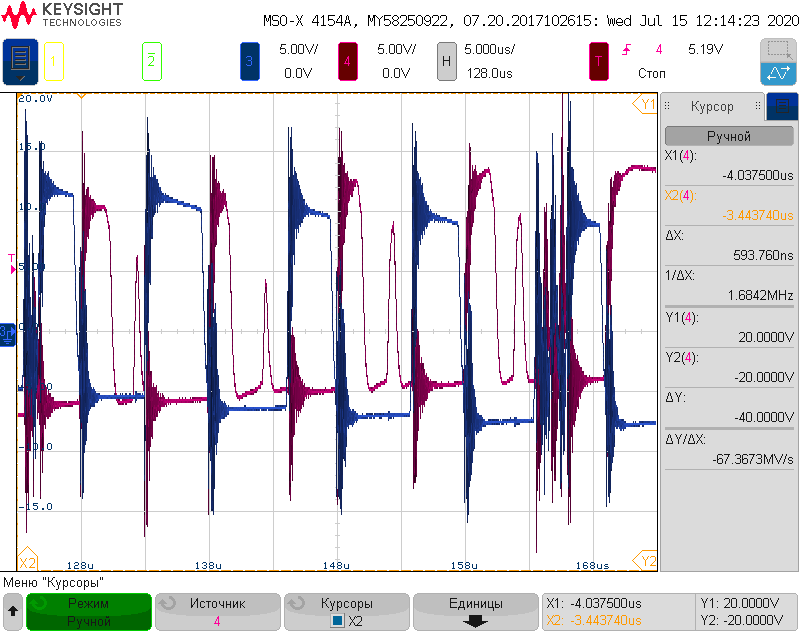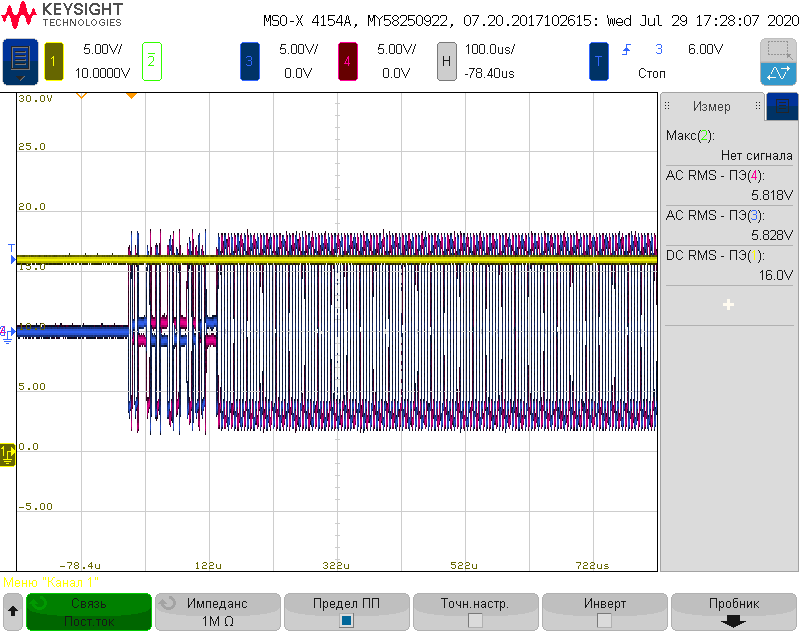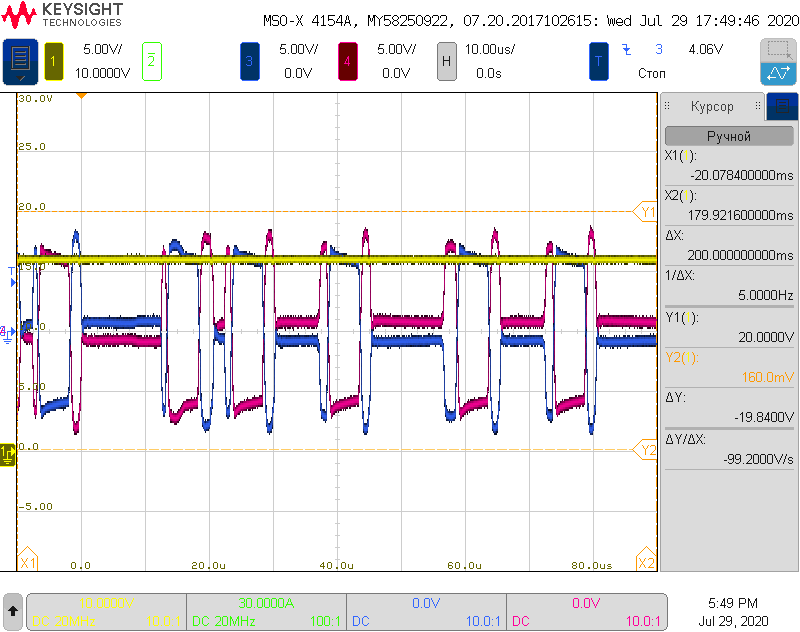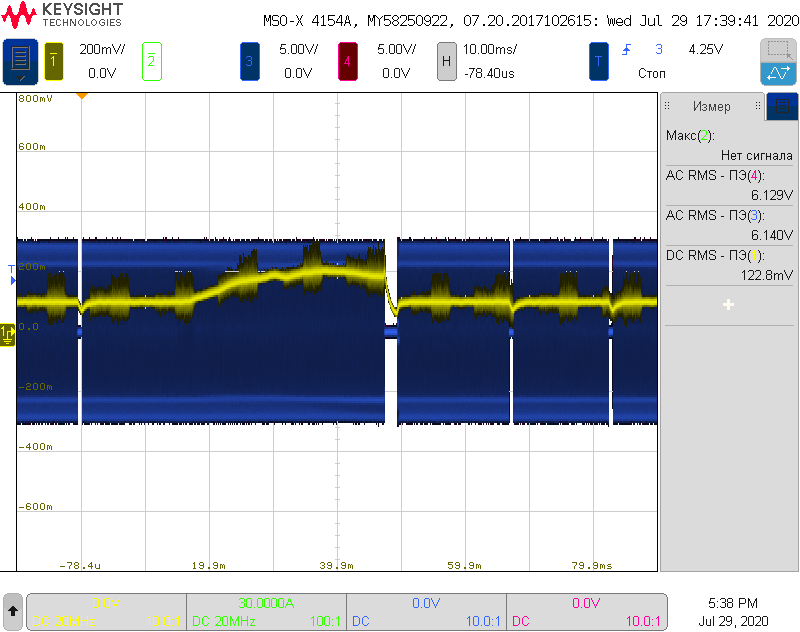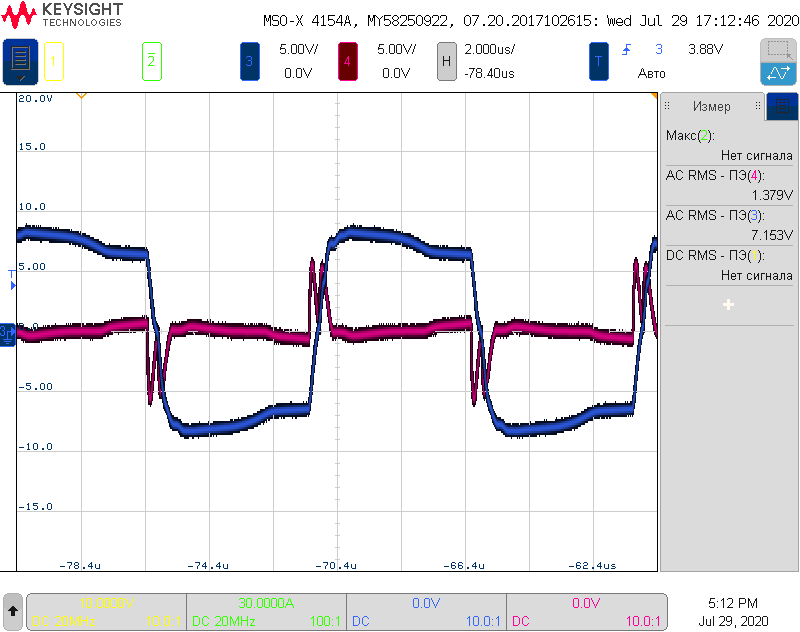Hello TI!
I got another issue with UC3875. Now it's turn-on problem. When the 18VDC (300 mA limited) is applied to the PWM controller, it starts up, but the PWM signal is unstable: there are gaps in cycles, and the duty cycle is not always 50% as it should be. Later (5-15 mS), the situation returns to normal and the PWM works fine. The situation gets worse when I apply the main voltage (200VDC) and then turn on PWM controller. Once, with such a turn on, transistors A and B burned out. If I first turn on the PWM controller and only then apply the main voltage, everything is ok. What could be the reason for this behavior? SS is working fine by the way. Please note, there is no feedback loop now, for test purpose and CS pin is tied to SGND also.
waveforms on QA (GS) and QB (GS)
regards,
Vasily.


